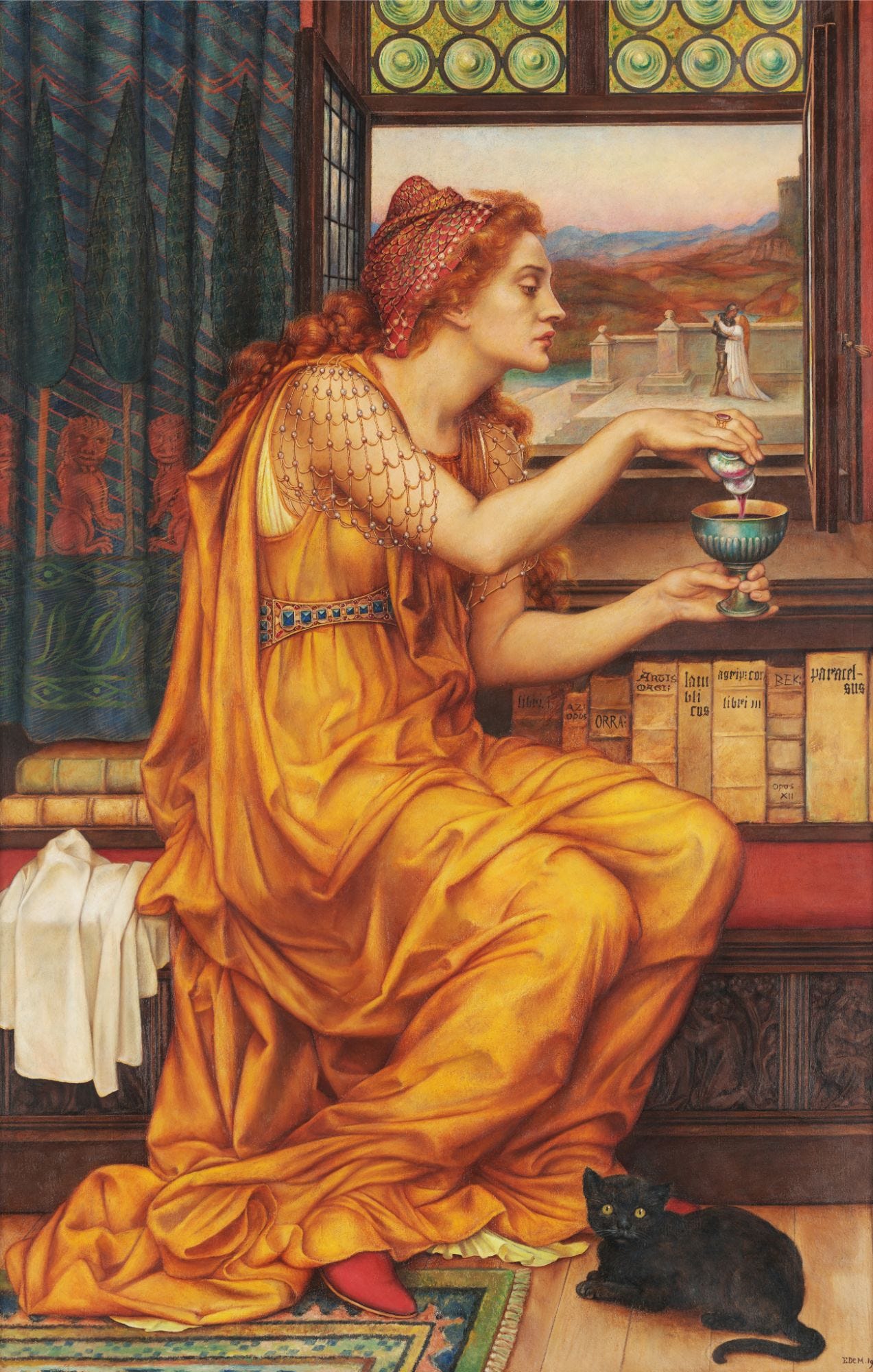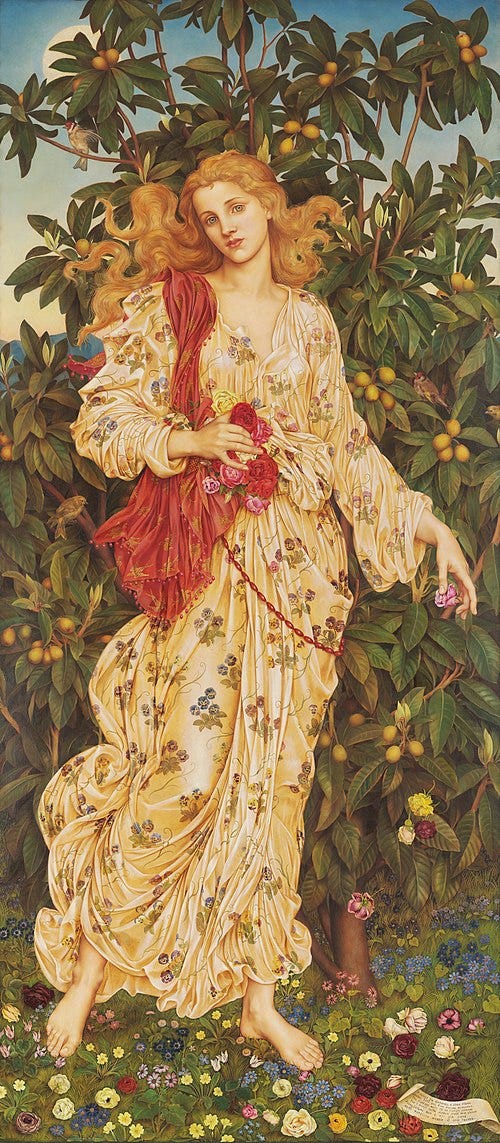Evelyn De Morgan and the End of Pre-Raphaelite Art
A brilliant female artist finally gets her moment in the sun.
This essay is part of the series Art, Myth, and Literature: The Pre-Raphaelites. To read other essays in this series and gain access to the full archive, become a paid subscriber today:

We began this series on the Pre-Raphaelites with Shakespeare’s Ophelia, rendered with equal-parts opulence and despair by John Everett Millais in 1851-52. Decades later, the Pre-Raphaelite Brotherhood had long since disbanded, but the movement continued to find adherents in younger artists. Britain had changed dramatically by the end of the Victorian period: now, a majority of its citizens lived in urban areas, the nation was a leading industrial power, and in just a few years, it would face the horrors of the First World War.
From this cacophony of industrial anxiety and scientific progress came the Spiritualist movement, which blossomed first in the United States and spread its message of mediumship, psychic gifts, and the great beyond to the UK. Today’s artist was an avid Spiritualist, and her interest in mysticism and the occult would take hold in her evocative paintings.
We end our series with Evelyn De Morgan.
De Morgan, like many female artists of her time (such as the Impressionists Berthe Morisot and Mary Cassatt) is only now getting the credit she deserves. Those who live near London can see a De Morgan retrospective at Guildhall Art Gallery through April 2026 called “Evelyn De Morgan: The Modern Painter in Victorian London.” She is increasingly recognized for her precision, symbolic depth, and eye for beauty.
Take her 1894 painting Flora (below), which depicts the Roman goddess of flowers, a work heavily inspired by Sandro Botticelli’s Primavera. Starting in 1890, De Morgan and her husband William began spending every winter in Florence, a city much beloved by De Morgan for its wealth of masterpieces from the Italian Renaissance. Flora is not just an ode to a divine feminine figure but also to the city that bears her name, the city where Botticelli lived. In De Morgan’s work, the goddess’s dress is decorated with violets, several varieties of which are native to Italy. Behind her is a loquat tree, a common shrub in Italy that fruits in the spring.

Despite its clear Italianate inspiration, the scene bears the hallmarks of the Pre-Raphaelite style: the model’s long, red hair, the adherence to Ruskin’s “truth to nature” visible in the scene’s precise details, the vibrant color scheme. Throughout this series, we’ve explored the Pre-Raphaelite connection to literature and mythology, so it is fitting that De Morgan derived ample inspiration from Greek and Roman myths. Even at the bottom of the painting, she includes a few lines in verse (here translated from the Italian by James Stewart):
I come from Florence and I am Flora.
That city takes its name from flowers,
Among flowers I was born and now I take a new home,
In the mountains of Scotland I shall reside.
Welcome me and may my treasure,
Be dear to you amid the northern mists.1
Flora was sold to one of De Morgan’s most important patrons, the Scottish shipping magnate William Imrie, who also commissioned De Morgan’s Cassandra and Helen of Troy (both painted in 1898). If Millais’s Ophelia is emblematic of the Brotherhood, then De Morgan’s Flora is the perfect representation of the Pre-Raphaelite style in its final days.


